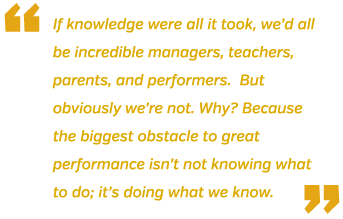Earlier this month, we talked about employment trending outside the real estate industry. I warned you not to become too inwardly focused as you think about hiring, but instead keep your eyes on the broader employment horizon.
Why would you want to put effort into such a task?
If the real estate industry is going to grow over the next decade, it must regain its ability to systematically attract new talent from other industries. Real estate companies were once masters at this trade, but many lost their ability to be effective during the downturn.
This happened as a natural consequence of the real estate industry shrinking from over 1.5 million agents in 2006 to less than one million after the downturn. During that time period, there were plenty of experienced agents to go around, and there was not an immediate and compelling need to hire from outside the industry.
Now that most real estate markets have started to recover, once again there is energy towards hiring new talent from the outside. As you make this transition in your organization, don’t make the mistake of assuming that the tactics that work with experienced agents will work similarly with these new-to-real estate candidates.
Also, much has changed in the broader employment market over the past seven years. So even the tactics you used before the downturn could be less effective considering today’s job market realities.
To be effective going forward, you’ll need to become a student of what makes the candidates in the “normal job market” tick. In addition, you’ll need to learn how to craft your message to be heard by today’s talented individuals who will become your next generation of new agents.
To get you started on your quest, I’d like to point you to a company called PayScale. If you’re not familiar with this company, it’s the leading website people use when they have questions about pay and benefits. It similar to Zillow, but instead of telling you what your house is worth, it tells you what you’re worth!
When a person is considering a new job, they enter some basic information about their education, experience, and the new job they’re considering. PayScale then delivers a salary report that outlines what he or she could expect to be paid for a particular job in a particular market.
It’s possible that many of the “new-to-real estate” candidates you interview are using a tool such as PayScale. If you were to request information on being a real estate agent in my local market (Seattle), you might get a report like this:
So, a full-time agent with 10 years of experience operating in the 50th percentile can expect to make about $60K/year in the Seattle market. To make $120K (or more) per year, a person would need to be in the 90th percentile.
While this is all interesting information from the candidate’s perspective, how is it going to help you?
If PayScale has millions of people entering pay and benefit information, it becomes a rich environment for employment research. I’m sure that PayScale sells this information (in detailed and specific versions) to all types of companies.
However, they also make a bunch of this data available to the general public at no cost. By just reading and digesting the free reports and information, you can get quite an education on the employment market.
I encourage you to view these reports on your own. In my next couple of WorkPuzzles, I’ll highlight several reports I found most interesting and relevant to real estate agent hiring.
In the meantime, go to PayScale and find out what they report for agent wages in your market. It would be interesting to hear from you on how accurate this information is for your area compared to the actuals you have in your company. Like Zillow, sometimes the estimates done by PayScale are not completely reflective of reality.
Join the WorkPuzzle Discussion at the Tidemark Online Community (TMOC)
Engage in the WorkPuzzle discussion by joining the TMOC private social network. Commenting on a public blog like WorkPuzzle can be a little intimidating, so why not join the discussion inside the privacy of the TMOC discussion group?
By joining TMOC, you'll get to see who else is in the group and your comments will only be seen by those whom you trust. Joining TMOC is quick, easy, and free (no kidding…this takes less than 2 minutes). To get started, click here.
Already of a member of TMOC? If so, join the WorkPuzzle Dialog Group by clicking on the WorkPuzzle Group icon on the left side of your TMOC homepage. Questions? Email the WorkPuzzle editor (workpuzzle@hiringcenter.net) and we'll walk through the process.
 Editor's Note: This article was written by Ben Hess. Ben is the Founding Partner and Managing Director of Tidemark, Inc. and a regular contributor to WorkPuzzle.
Editor's Note: This article was written by Ben Hess. Ben is the Founding Partner and Managing Director of Tidemark, Inc. and a regular contributor to WorkPuzzle.















